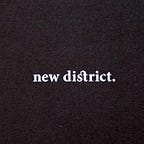Looking good enough to drink
What wine labels teach us about design and perception
Walking into a wine store can be a paralyzing experience. If the rows upon rows of bottles don’t immediately cause you to freeze from indecision, you might aimlessly wander the aisles, perhaps glancing at the country of origin or trying to remember the name of a wine you’ve had before.
If you can’t find anything familiar, you probably resort to one last, desperate move: you choose based on the label.
To experienced wine drinkers, this might seem offensive. But in a world where there are only a few large, familiar brands and thousands of small ones, it’s completely understandable. If the average casual wine drinker doesn’t want to settle for a bottle of bog-standard Jackson-Triggs or Yellow Tail, they’re faced with an overwhelming amount of choice. As of August 2014, B.C. Liquor’s online catalogue lists 3,722 varieties of wine; that’s more than spirits, coolers and beers combined.
And even though judging a bottle by its cover might seem like an amateur move, research suggests that even professionals are swayed by the look of wine labels.
Enter Frédéric Brochet, a researcher from the University of Bordeaux. In 2001, he assembled a panel of 54 wine experts and served them the same Bordeaux wine from two bottles: one with the label of an expensive, well-known winery, and the other labelled more cheaply.
When asked for tasting notes, the wine experts described the “two” wines in completely different ways. As the New Yorker’s Jonah Lehrer writes, “The grand cru was summarized as being ‘agreeable,’ ‘woody,’ ‘complex,’ ‘balanced,’ and ‘rounded,’” while the cheaper bottle was “‘weak,’ ‘short,’ ‘light,’ ‘flat,’ and ‘faulty.’”
So what is it about a label that makes people prefer one wine over another?
At first glance, wine labels serve the same purpose as any other kind of packaging: they convey important information about the product, such as grape variety, vintage year, and alcohol content.
But acclaimed wine designer David Schuemann claims that labels’ imagery, colour and layout have a profound effect on the way wine is perceived. According to him, label design not only influences which wines people buy, but also actually increases their enjoyment of the wine as they drink it.
In a recent book about label design, Schuemann writes that conservative designs featuring cream or white backgrounds, simple logos, and metallic accents evoke quality and appeal most to experienced wine drinkers. These designs harken back to a time when old-world vintages featured simple “etchings of the estate’s chateau or the family’s coat of arms.”
As new, young wine drinkers enter the market in larger numbers, wineries have also begun to produce edgier designs that “pop” off the shelf.
For wines retailing under $10, Schuemann’s design firm has experimented with hand-drawn elements, bold colours and eye-catching imagery. The firm caused a stir in 2013 when it ran a design featuring a naked woman riding a bicycle through the night sky, causing the Cycles Gladiator cabernet sauvignon to skyrocket in sales (and be banned in Alabama).
Design isn’t everything, though; those flowery descriptions on the backs of bottles can also influence consumers’ taste in wine.
In 2013, a University of Michigan study found that product descriptions that feature references to senses other than taste — for example, a package describing the “BBQ smell” and “crunchy texture” of a bag of potato chips — causes subjects to think that the product tastes better.
The name of the vintage itself makes a big difference, too. According to a marketing experiment carried out by Brock University’s Antonia Mantonakis in 2012, labels with difficult-to-pronounce names are perceived to be more valuable than wines with simpler names.
Subjects in the study “not only reported liking the taste of the wine better if it was associated with a difficult-to-pronounce winery name,” but also consistently expressed a willingness to pay more for wines with names that were more “difficult to read” and “foreign-sounding.”
The most surprising part of Mantonakis’s study? The more that subjects knew about wine, the stronger the effect, and the more they looked for subtle clues about value. Oenophiles, Mantonakis speculates, are ultimately on the hunt for rareness.
“If something is rare and unique, then maybe it might be [of] a higher value, and it may be something that is more special,” she told NPR in a recent interview.
Far from simply ornamenting bottles or conveying information, labels frame the experience of wine and tell a story about each bottle.
There’s certainly more to tasting wine than just drinking it. The name of a wine, the shape of the bottle, colours, images, the descriptions: all of these things cause us to begin tasting a wine long before we open the bottle.
Maybe the next time you’re stranded at the wine store and short on ideas, appreciating the label might not be a bad place to start.
